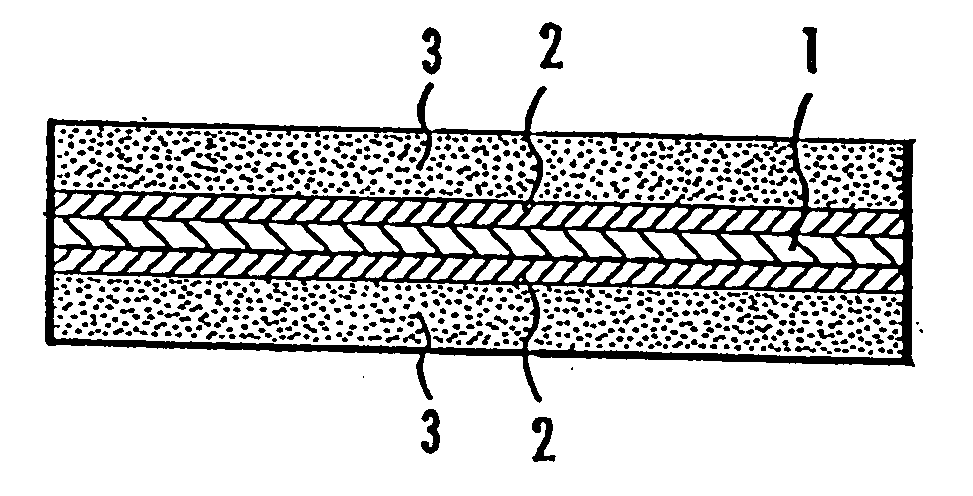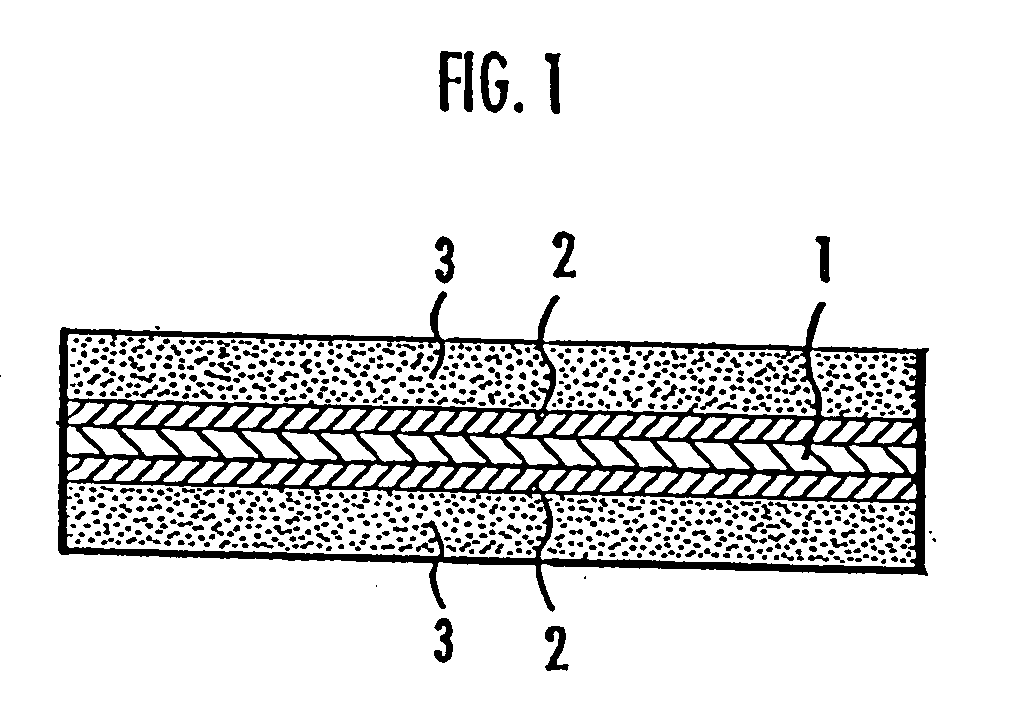Membrane-electrode assembly for use in solid polymer electrolyte fuel cell and solid polymer electrolyte fuel cell
- Summary
- Abstract
- Description
- Claims
- Application Information
AI Technical Summary
Benefits of technology
Problems solved by technology
Method used
Image
Examples
example 1
[0138] In the present example, at the beginning, in a 2-liter three-necked flask equipped with a stirrer, a nitrogen introducing tube and a dropping funnel, 64.9 g (600 mmol) of anisole and 480 ml of dichloromethane were placed and cooled down to 10° C. in an ice bath, and then 80 g (600 mmol) of aluminum chloride was added. Then, 125.7 g (600 mmol) of 2,5-dichlorobenzoyl chloride was slowly dropped from the dropping funnel. On completion of dropping, 80 g (600 mmol) of aluminum chloride was further added. Then, the temperature of the reaction mixture was brought back to room temperature, and stirring was continued for 12 hours.
[0139] Next, the obtained reaction solution was poured into 2 liters of ice water containing 300 ml of concentrated hydrochloric acid, and the separated organic layer was extracted with a 10% aqueous solution of sodium hydroxide. Then, the sodium hydroxide was neutralized with hydrochloric acid, and the precipitated solid product was extracted with 2 liters ...
example 2
[0159] The reaction was carried out in the same manner as in Example 1 except that 18.1 g (133 mmol) of butanesultone as the compound (B-2) was used in place of 16.2 g (133 mmol) of propanesultone as the compound (B-1) in Example 1 to yield 20.8 g of a polyarylene copolymer (compound (2)) having sulfonic acid groups as a powdery polymer. The above described steps are shown in the following reaction formula (18). In the reaction formula (18), d, e and f are positive integers.
[0160] Next, a membrane-electrode assembly was fabricated in the same manner as in Example 1 except that the polyarylene copolymer (compound (2)) obtained in the present example was used.
[0161] Next, the physical properties of the polyarylene copolymer, the solid polymer electrolyte membrane, and the membrane-electrode assembly obtained in the present example were evaluated in the same manner as in Example 1. The results obtained are shown in Table 1.
example 3
[0162] In the present example, at the beginning, in a 2-liter three-necked flask equipped with a stirrer, a nitrogen introducing tube and a dropping funnel, 33.2 g (240 mmol) of 1,3-dimethoxybenzene and 300 ml of dichloromethane were placed and cooled down to 10° C. in an ice bath, and then 32 g (240 mmol) of aluminum chloride was added. Then, 50.3 g (240 mmol) of 2,5-dichlorobenzoyl chloride was slowly dropped from the dropping funnel. On completion of dropping, 32 g (240 mmol) of aluminum chloride was further added. Then, the temperature of the reaction mixture was brought back to room temperature, and stirring was continued for 12 hours.
[0163] Then, the obtained reaction solution was poured into 1 liter of ice water containing 150 ml of concentrated hydrochloric acid, and the separated organic layer was extracted with a 10% aqueous solution of sodium hydroxide. Then, the sodium hydroxide was neutralized with hydrochloric acid, and the precipitated solid product was extracted wit...
PUM
| Property | Measurement | Unit |
|---|---|---|
| Percent by mass | aaaaa | aaaaa |
| Equivalent per mass | aaaaa | aaaaa |
| Molecular weight | aaaaa | aaaaa |
Abstract
Description
Claims
Application Information
 Login to View More
Login to View More - R&D
- Intellectual Property
- Life Sciences
- Materials
- Tech Scout
- Unparalleled Data Quality
- Higher Quality Content
- 60% Fewer Hallucinations
Browse by: Latest US Patents, China's latest patents, Technical Efficacy Thesaurus, Application Domain, Technology Topic, Popular Technical Reports.
© 2025 PatSnap. All rights reserved.Legal|Privacy policy|Modern Slavery Act Transparency Statement|Sitemap|About US| Contact US: help@patsnap.com



